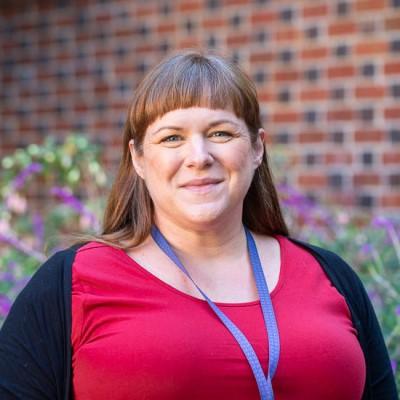UCSF-Bay Area CFAR: Call for Concept Proposal
Dear CFAR Community,
As we prepare for our grant renewal next year, we would like to invite concept proposals for two new CFAR subcores and new Scientific Working Groups:
- New Subcore on Implementing Long-Acting ART & PrEP
- New Subcore on Co-Morbidities
- New Scientific Working Group(s)- any topic
Please read on for more details. Please feel free to contact me or Lauren Sterling (lauren.sterling@ucsf.edu) with any questions on this process. We look forward to seeing your proposals (letters of intent due 9/2 and concept proposals due 10/10).
Monica Gandhi, MD, MPH
UCSF-Bay Area CFAR Director
Overview:
The purpose of this announcement is to solicit Letters of Intent (LOIs) for new components of the UCSF Bay-Area Center for AIDS Research (CFAR). Our CFAR will be submitting our renewal proposal in Summer 2026. The current structure of the Center includes five cores (Administrative, Developmental, Clinical, Bio-Behavioral, Basic & Translational). Each of the three scientific cores has three subcores. As of July 1, 2025, we also will have one Scientific Working Group (Implementation Science). Refer to https://cfar.ucsf.edu/cores for the current structure of the UCSF-Bay Area CFAR.
For the renewal, we plan to largely keep the existing structure intact, but with several changes to position our CFAR to be responsive to emerging NIH/OAR priorities for HIV research. We plan to transition the Bio-Behavioral Core and Implementation Science SWG to a new Implementation Science Core which will retain the Substance Use Working Group and the Biomarkers Sub-Core. We would like to add a new Implementing Long-Acting ART & PrEP Subcore under this new Implementation Science Core. We would also like to add a new Comorbidities Subcore under the Clinical Core, as well one or more new Scientific Working Group (SWG)(s), to the CFAR. The purpose of this call is to invite concept proposals from the CFAR Community for the two new Subcores and the new SWG(s). Please see the below sections for the rationale for each of the two requested Subcores and the purpose of a SWG. The Concept Proposal Guidance as well as a general description of the purpose and activities of a CFAR Core/Subcore or Scientific Working Group are linked.
Rationale for a new Implementing Long-Acting ART & PrEP Subcore:
The advent of novel long-acting antiretroviral therapy (ART) and pre-exposure prophylaxis (PrEP) agents, starting with the approval of cabotegravir/rilpivirine (CAB/RPV) for ART and CAB for PrEP in 2021 and lenacapavir (LEN) for treatment in 2022 and PrEP in 2025, heralds a new era. UCSF has been a leader in the implementation of long-acting ART since its approval, using CAB/RPV in novel ways such as among people with HIV (PWH) with adherence challenges and viremia. Data from the Ward 86 HIV Clinic showing the success of CAB/RPV among PWH with viremia contributed to changes in US guidelines in 2024 to allow for the use of this regimen in those without virologic suppression and adherence challenges. UCSF continues to innovate on the use of long-acting PrEP and is poised to conduct implementation projects with the newly-approved every six-month injection of LEN for PrEP.
Implementation science studies are now needed to determine the optimal ways to implement long-acting ART and PrEP in real-world clinics and public health settings. The Implementing Long-Acting ART and PrEP Subcore will serve a wide swath of investigators across our CFAR to help them build core skills in the methods of implementation science, supporting novel HIV prevention and treatment research approaches to accelerate knowledge to sustainable action on the optimal use of long-acting agents.
Rationale for a new Co-Morbidities Subcore:
Despite suppressive ART, PWH continue to have an increased risk of multi-morbidity, frailty, and mortality compared to the general population, risks that are likely to grow even further with the aging of the HIV pandemic. While a persistent inflammatory state has been linked to most of these risks, we still lack effective therapies to mitigate these risks. Thanks to REPRIEVE, we now know that statins reduce atherosclerotic cardiovascular disease (CVD) risk in people with HIV, but despite these benefits, residual CVD risk remains high in many PWH. Furthermore, statins have no effect on other leading comorbidities including cancer and TB, the leading causes of death of PWH, or even heart failure, and actually increase the risk of Type 2 diabetes, which is also increased in PWH. There remains an unmet need to identify new interventional targets to reduce multi-morbidity and mortality in HIV. UCSF has long been a leader in multidisciplinary translational research in this area spanning CVD, pulmonary, liver, renal, neurologic, endocrine, cancer complications, and frailty, often leveraging the clinical core’s SCOPE, MWCCS, and CNICS cohort resources.
Given the unmet need to develop and implement novel interventions, UCSF’s great strengths in these areas, and NIH’s increased emphasis on chronic diseases and population health, a new Co-Morbidities Subcore will be created in the Clinical Core to serve a diverse group of investigators working in these areas. We expect the subcore to convene investigators working across diverse comorbidity outcomes to build skills in multidisciplinary clinical research, facilitate access to available cohorts (e.g., SCOPE and MWCCS for surrogate marker research, CNICS for rare clinical event outcomes) and relevant ACTG clinical trials, as well as resources in the basic and translational core for biomarker research, and implementation science core for improving utilization of established interventions (e.g., statins, anal cancer screening).
Purpose of a SWG in the CFAR:
A Scientific Working Group (SWG) is a group of investigators (HIV or non-HIV) who share a common interest in a specific area of scientific focus that is critical to addressing the HIV epidemic, but is a gap or underdeveloped at the CFAR institution(s). The research area should not already be well-established at the CFAR institution(s). The goal of a SWG is to promote multi-disciplinary collaborations that result in successful applications for new HIV/AIDS research awards and subsequent scientific contributions. Examples of working group aims/activities include but are not limited to: providing scientific leadership, promoting collaborative and interdisciplinary research, facilitating procurement of funding for relevant projects, assistance with faculty recruitment, mentoring, training, sponsoring events such as conferences or workshops, curriculum development. The SWGs should reflect the NIH HIV/AIDS priority areas.
The UCSF CFAR only has one active SWG, the Implementation Science Working Group, which will be transitioning off with the renewal, so we are hosting this open call to see what SWG ideas exist within the CFAR community. The UCSF Bay-Area CFAR will host up to two SWGs.
Timeline:
- July 1, 2025: Call for Concept Proposals for new Subcores or Scientific Working Groups released
- September 2, 2025: Letter of intent (1-2 page format) due about intent to submit subcore or propose new SWG – please include list/roles of key personnel and brief description of proposed activities
- October 2, 2025: Brief feedback on the LOI and confirmation of eligibility will be provided
- October 10, 2025: Concept Proposal Applications Due (Subcore Guidance; SWG Guidance)
- Nov 2025: Final decisions made
- Jan-April 2026: CFAR leadership will work with proposal leaders on the text for the renewal application from each Subcore/SWG to be finalized for the application by April 2026
Background on the CFAR Overall:
The UCSF-Bay Area CFAR is one of 20 CFARs funded nationally by the National Institutes of Health. Our CFAR, through our Cores and SWGs, provides added value to HIV research efforts at our partner institutions (UCSF, the Gladstone Institutes, SFDPH, SFVAMC, and the Vitalant Research Institute, as well as our collaborating international institutions) by supporting activities that cannot easily be provided through standard research awards. CFARs promote and encourage collaboration and coordination of research aligned with the NIH HIV/AIDS priority topics for AIDS-designated funds. CFAR Core aims and services address the needs of affiliated HIV investigators and be inclusive of the full range of funded HIV research to the broadest extent possible. For more information about the National CFAR Program, including the mission of the program overall, please see the NIH CFAR Program website. For more background information on the UCSF-Bay Area CFAR, please see Appendix A: Current UCSF-Bay Area CFAR Mission and Specific Aims. All of these were originally developed for the 2021 renewal application.
Supporting Documentation:
Applicants should review the following back-up documentation when formulating their concept proposals:
- The most recent CFAR Program Announcement: https://grants.nih.gov/grants/guide/pa-files/PAR-23-117.html
- FY21-25 NIH Strategic Plan for HIV and HIV-Related Research: https://www.oar.nih.gov/sites/default/files/NIH_StrategicPlan_FY2021-2025.pdf
- Appendix A: Current UCSF-Bay Area CFAR Mission and Specific Aims

